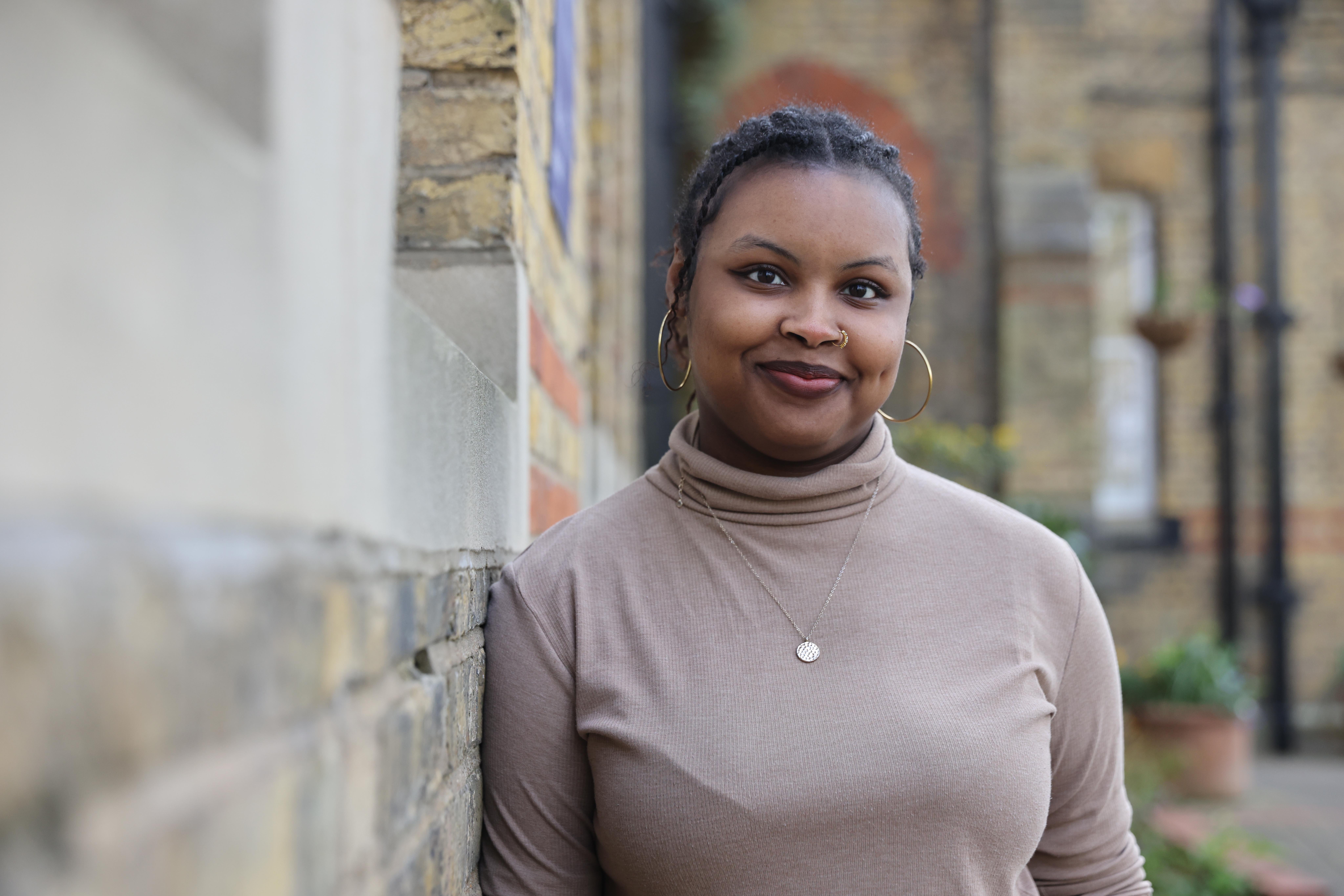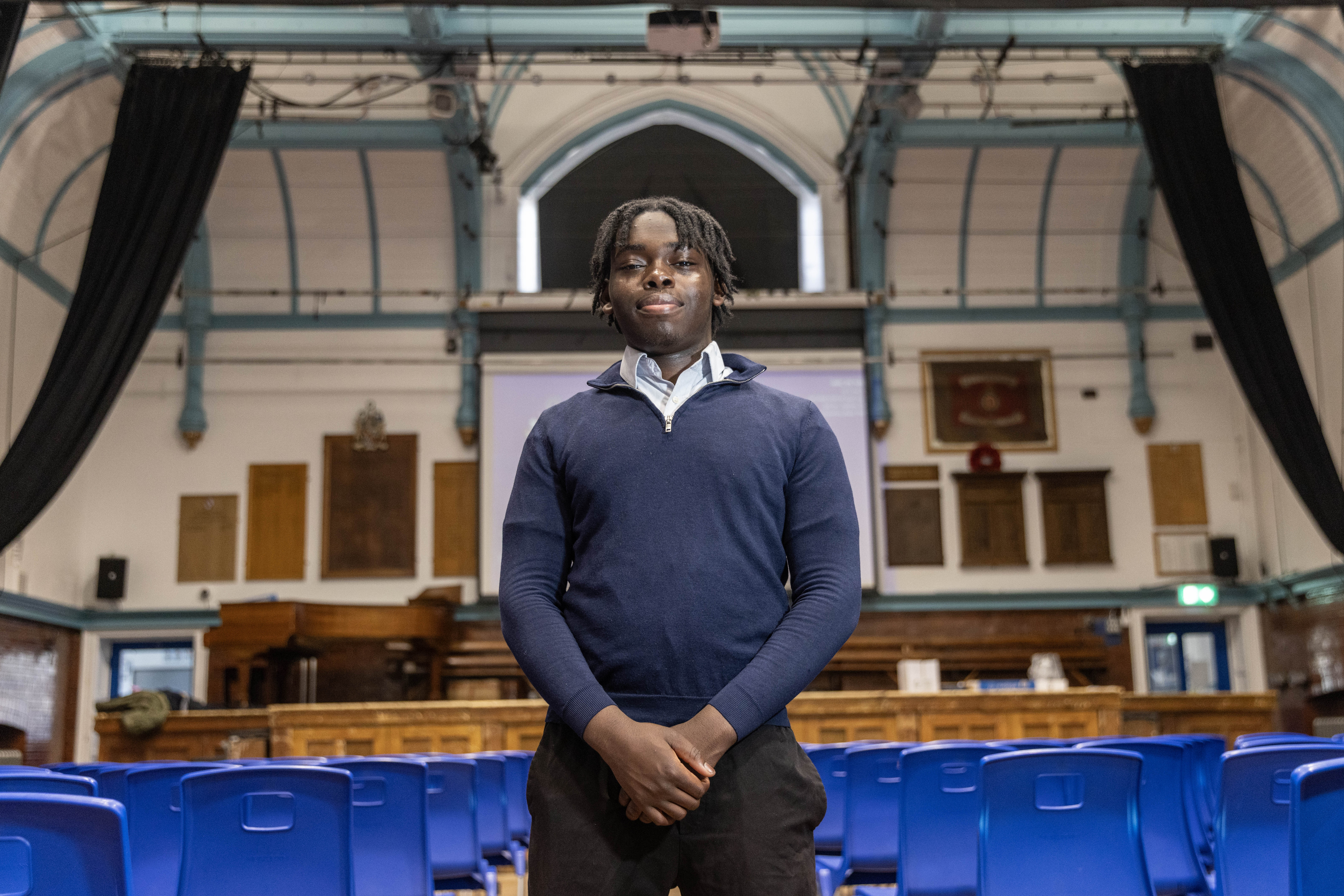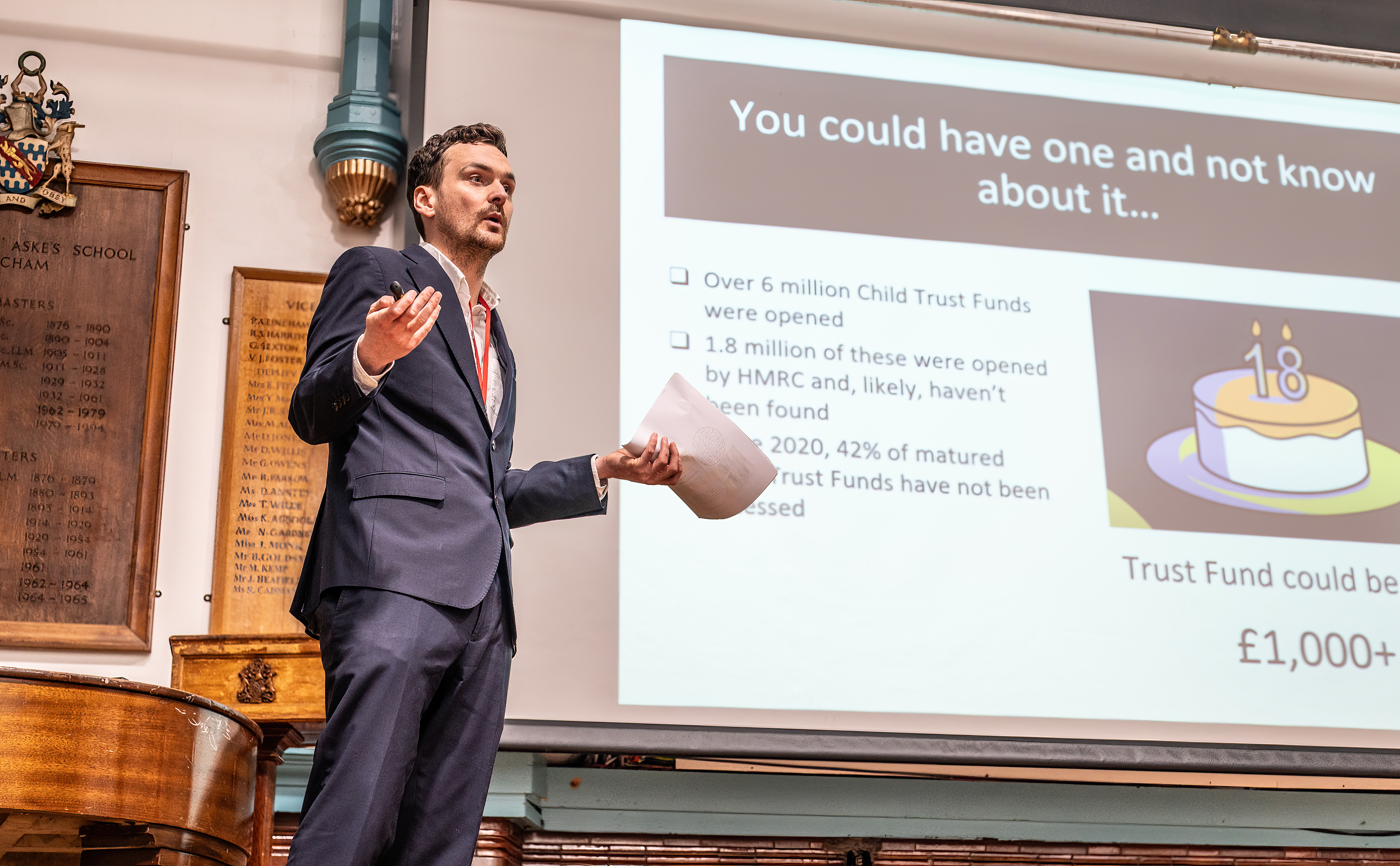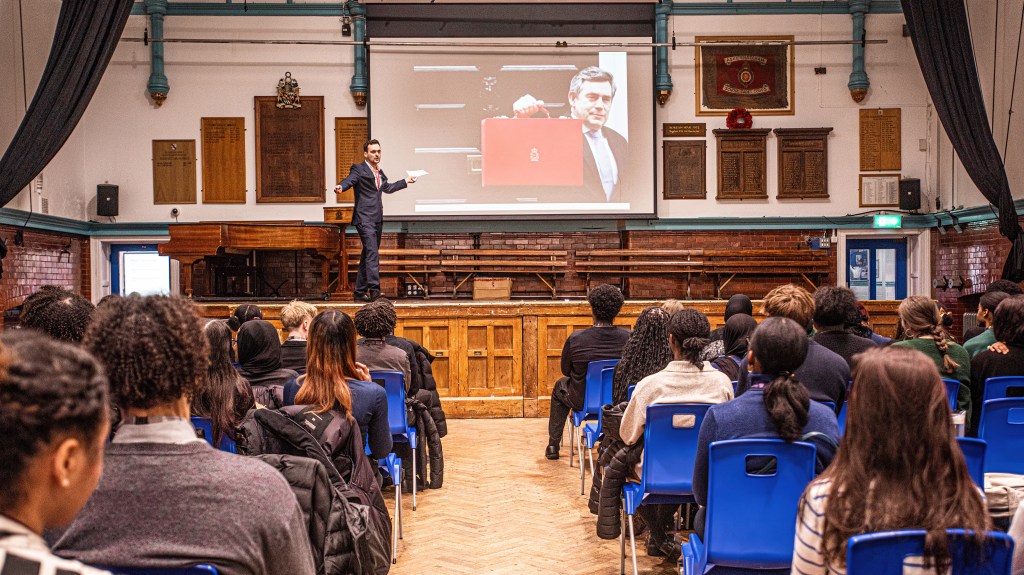Uncovering Hidden Wealth: How I Assisted Sixth-Formers in Locating £5,000 in Lost Child Trust Funds
“Can I see a show of hands from those familiar with a child trust fund?” I ask, looking out at a sea of unfamiliar expressions.
Out of approximately 80 Year 13 students, only about 30 hands rise.
“Now, keep your hands up if you know where your fund is.” Half of the hands drop.
I am visiting Haberdashers’ Hatcham College, located in New Cross, southeast London. This state secondary school is affiliated with the private Haberdashers’ school in Hertfordshire and is my own alma mater.
Standing in the main assembly hall for the first time since graduating in 2008, I spot my brother Dan’s name on the honors board for English prizes. Back then, speaking in front of the full Year 13 would have induced anxiety, but today I’m here with a purpose.
The Share Foundation, managing the Department for Education’s savings initiatives for looked-after children, has revealed that there are 770,000 unclaimed child trust funds totaling £1.5 billion. My goal today is to assist my fellow Askeans in locating their portions of this substantial savings resource that they might not even be aware of.

Understanding Child Trust Funds
Initiated by the Labour government in 2005, the child trust fund savings scheme aimed to encourage saving among parents for their children. This initiative was retroactively implemented to provide accounts for every child born in the UK between September 1, 2002, and January 2, 2011—totaling around 6.3 million accounts. The program was replaced by Junior ISAs, meaning that since 2011, new funds are no longer automatically set up for children.
Every eligible child initially received £250 from the government, with an additional payment of £250 available at age seven, depending on the child’s birth date. Parents were issued vouchers to establish an account with a chosen provider and were permitted to add more money into the account. Over 1.87 million children, whose parents did not open accounts, had funds created by the government.
These accounts prohibited access until the children turned 18, allowing the first account holders to make withdrawals starting in 2020.
However, countless accounts—specifically 475,239 opened by the government, 242,300 of which belong to low-income households—remain unclaimed. An estimated 770,000 young adults now possess savings they may be completely unaware of.
According to Sarah Coles from investment platform Hargreaves Lansdown, “It’s astonishingly high how much money remains unclaimed. Anyone eligible for a child trust fund should take initiative to uncover the savings registered in their name.”
There are three primary types of child trust funds. Cash accounts, which function similarly to classic savings accounts, account for about 17 percent, whereas investment-based accounts, where funds are allocated to stocks and shares, represent about 4 percent of total accounts.
Most child trust funds (approximately 79 percent) are classified as stakeholder accounts, where investments were made in the stock market and gradually transitioned to lower-risk investments as the child aged past 13. These accounts maintained capped annual management fees of up to 1.5 percent.
The majority of government-established child trust funds being stakeholder accounts typically saw an increase in value, even without additional contributions. Recent government data indicates that the average trust fund was valued at £2,212 in April 2024, while the average stakeholder account stood at £2,047.
The Share Foundation posits that an average unclaimed child trust fund, with an initial government contribution of £250 and no extras added, would currently be worth around £1,400. Accounts that began with £500 could be worth approximately £2,700.
Reclaiming Lost Funds
Locating a lost account and reclaiming it can take as little as five minutes.
Back at Haberdashers’ Hatcham, my presentation featuring a photo of former Prime Minister Gordon Brown, who pioneered the introduction of child trust funds, isn’t met with much enthusiasm—until the subject of a potentially lost £2,000 fund sparks their interest.
HM Revenue & Customs offers a free online tool to find lost child trust funds. Users simply need to input their national insurance number and address, and will receive a response within three weeks.
An alternative is the Share Foundation’s “find my CTF” online search service. It also requires entry of the national insurance number, and the Share Foundation handles the rest. Since launching this service in 2018, it estimates having reunited young people with about £150 million in savings. In some cases, results can be delivered in less than 24 hours.
This was evident for students at my former school. One day post-visit, I receive an email from a Year 13 teacher: “One student informed me that she completed the form and discovered she had over £1,000! She was ecstatic.”

Eighteen-year-old Zainab Kamara-Bah quickly filled out the Share Foundation form on her phone while heading home to Camberwell. By the following afternoon, she had access to her account held with the savings organization One Family.
“I didn’t anticipate that amount. Other friends had received a maximum of £900, but when I opened my account, I was stunned to find I had £1,312. It’s doubled my funds,” she shared. “A friend wasn’t initially planning to check, but after seeing my amount, she looked and found £500.”
One month later, six students collectively recovered a total of £5,236, averaging £872 each.
Kamara-Bah intends to allocate part of her fund toward a vacation in Portugal with two friends and reserve the remainder for university expenses as she aims to study history.
A survey conducted by the Share Foundation among 800 participants revealed that about 22 percent of those who reconnected with their funds planned to save the money or utilize it for daily expenses, while 9 percent wished to invest it in university or future careers.

Seventeen-year-old Folarin Iyiola, another student at the school, accessed his £1,000 fund two days following my visit. Like 14 percent of survey respondents, Iyiola plans to purchase a car upon turning 18, gaining access to his funds.
“I had no idea it could be this simple to find. I assumed I needed assistance from my parents. They likely weren’t even aware of what a child trust fund was,” he remarked. “It feels like an extra advantage for young people like me. Not every 18-year-old has a source of income, and the child trust fund provides some support.”
Begin Your Search
As of October of last year, approximately 3.5 million of the 6.3 million trust funds had yet to mature because the account holders had not reached 18.
This allows parents and other family members to continue contributing, with annual contributions capped at £9,000, and any investment returns or interest being entirely tax-free.
It may be worthwhile for families to consider transferring accounts into Junior ISAs, the new savings product that replaced child trust funds in 2011. There’s a broader selection of these accounts, typically offering better rates and lower fees. For instance, the Earl Shilton cash child trust fund currently offers 3.75 percent, while the Coventry Building Society Junior ISA boasts 4.25 percent.

Since individuals don’t receive a national insurance number until they’re 16 (automatically sent out by HMRC around their birthday) children must wait until then to begin searching for their trust fund.
Gavin Oldham, founder of the Share Foundation, recommends starting the search promptly after this age. Children may take on account management responsibilities at 16 by reaching out to the respective providers, but may not withdraw any funds until they are 18.
While the funds will remain dormant until accessed, Oldham emphasizes the importance of locating these accounts so that young people can utilize the money as a foundation for their adult lives. “I view it as starter capital, providing resources to embark on a successful adult life,” he stated.
He advocates for simplifying the system, suggesting that dormant child trust funds be automatically released to account holders at the age of 21 through the student loan framework or payroll benefits.
Kamara-Bah believes the government should reinstate child trust funds, ensuring that every child receives a dedicated savings account again. “It’s unfortunate that the program has been discontinued; it effectively motivates individuals to manage their finances wisely,” she commented.
As I exit the assembly hall, I contemplate how many more students nationwide might possess hidden savings, unaware of their potential. I envision the holidays they could plan, the vehicles they could purchase, and the university experiences that could be more financially manageable—if only they recognized how effortless it could be to access their funds.




Post Comment